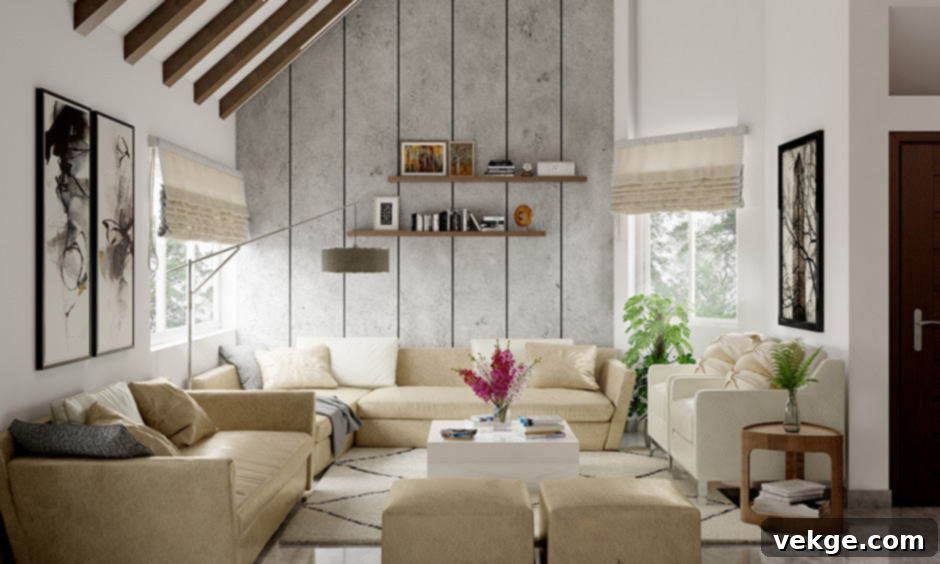Transform Your Home: 15 Brilliant Interior Design Ideas for Modern Living
In the increasingly fast-paced rhythm of modern life, the importance of exceptional home interior design has escalated significantly. A well-executed interior not only enhances daily comfort and functionality but also serves as a profound expression of personal taste and a lifestyle philosophy. From the foundational layout and structural elements to the intricate details of décor and furnishing, every aspect of home interior design contributes to creating a space that exudes warmth, beauty, and individuality.
If you’re seeking inspiration, innovative concepts, and practical advice to elevate your living space, you’ve come to the right place. This comprehensive guide is crafted to take you on a journey through various design styles, ingenious space-saving techniques, and smart solutions, helping you envision and realize your ideal home environment. Prepare to unlock the potential within your walls and transform your house into a truly personalized sanctuary.
Presented below are 15 practical and highly creative interior design ideas, thoughtfully curated to address the unique characteristics and functional demands of different areas within your home. Let’s delve into these transformative concepts together.
1. Embrace Modular Space Design for Ultimate Flexibility
Modular space design is a cornerstone of modern interior design, emphasizing unparalleled flexibility and adaptability to meet evolving lifestyle needs. This approach centers on furniture, storage systems, and spatial dividers that can be easily reconfigured or relocated. It’s particularly effective for dynamic environments such as compact urban apartments or small office interior design where versatility is paramount.
By utilizing modular units, a single room can seamlessly transition between different functions throughout the day. For instance, a living room might become a temporary guest bedroom, or a study nook could transform into an intimate dining area. This intelligent design strategy significantly boosts space efficiency and promotes sustainability by allowing residents to adapt their environment rather than constantly seeking new spaces. It’s an ideal solution for contemporary urban families who value innovation and multifunctional living.
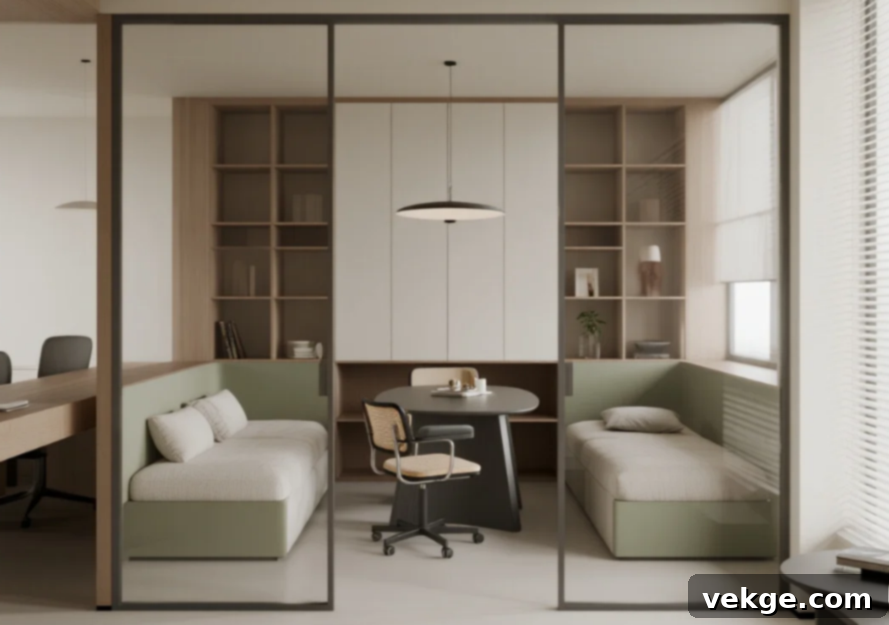
2. Optimize Flow with Smooth Moving Lines
The concept of “moving lines” in interior design refers to the natural pathways people take when navigating through an indoor space. A crucial aspect of effective home interior design, smooth moving lines aim to minimize crossovers, eliminate obstacles, and ensure an unimpeded flow. Well-designed moving lines dramatically enhance spatial efficiency, making a home feel more open, comfortable, and intuitive to live in. This is especially vital in high-traffic areas like kitchens, living rooms, and bathrooms, and even impacts the overall feel of a bedroom, including the bedroom interior ceiling design which can guide the eye.
When planning your layout, meticulous consideration should be given to door swings, the strategic placement of furniture to avoid bottlenecks, and how visual lines guide occupants. Ensuring clear, direct, and comfortable routes for daily activities allows family members to move more smoothly and naturally, reducing frustration and making every interaction with the space more enjoyable. This principle is fundamental to creating a truly functional and harmonious home.

3. Harness the Power of Multifunctional Furniture
Multifunctional furniture is a game-changer for maximizing space and enhancing convenience in any home. These innovative pieces ingeniously integrate several functions into one, such as beds that transform into sofas, storage units, or even desks. They are indispensable tools for improving space utilization, particularly in smaller residences or specialized areas like a small office interior design.
Consider examples like a folding murphy bed that tucks away into a wardrobe, a dining table that expands or features integrated storage, or a versatile sofa bed. These solutions not only conserve valuable floor area but also contribute significantly to the ease and flexibility of daily living. Such adaptable furniture is highly practical and flexible, earning deep appreciation from young professionals and anyone looking to optimize their living or working environment without compromising on style or comfort. It’s a smart investment in efficient and adaptable living.

4. Develop Vertical Space for Enhanced Storage and Aesthetics
A common oversight in many homes is the underutilization of vertical space – the area extending above eye level. Vertical space development involves strategically employing walls, the space above door frames, and even ceiling areas for both storage and decorative purposes. This clever home interior design strategy can dramatically expand a room’s functionality and visual appeal.
By integrating elements like sleek wall cabinets, towering bookshelves that reach the ceiling, or custom top cabinets, you can unlock significant storage capacity. This not only helps keep clutter at bay but also enriches the room’s visual depth and character. It’s an especially beneficial approach for small apartments or homes with generous ceiling heights, where floor space is at a premium. Maximizing vertical dimensions allows you to maintain a tidy environment while adding sophisticated design layers.
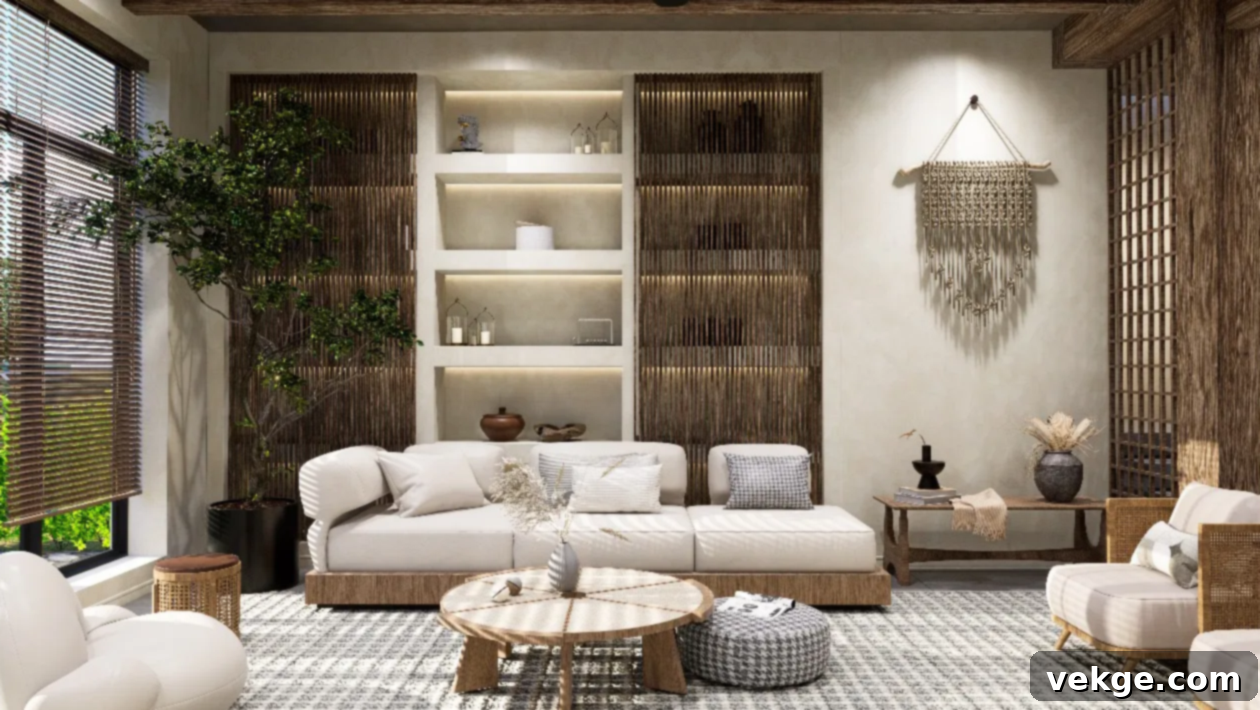
5. Implement Layered Lighting for Function and Ambiance
A well-conceived lighting layout is much more than mere illumination; it is a fundamental element that shapes the functionality, mood, and aesthetic beauty of a space. Effective modern interior design dictates that lighting should be thoughtfully partitioned and layered according to the specific function of each area, ensuring both practical brightness and desired atmosphere.
For instance, a living room might benefit from a combination of main overhead lights and wall sconces to create a warm and inviting ambiance, suitable for relaxation and social gatherings. In contrast, a kitchen demands brighter, often white light to ensure clarity and safety during food preparation. Bedrooms, including specialized bedroom interior ceiling design, often thrive with warmer, softer lighting to promote relaxation and aid sleep. Layered lighting, achieved through a strategic mix of downlights, spotlights, and subtle light strips, not only enhances the functional capabilities of a space but also emphasizes its architectural features and adds a significant sense of depth and three-dimensionality.
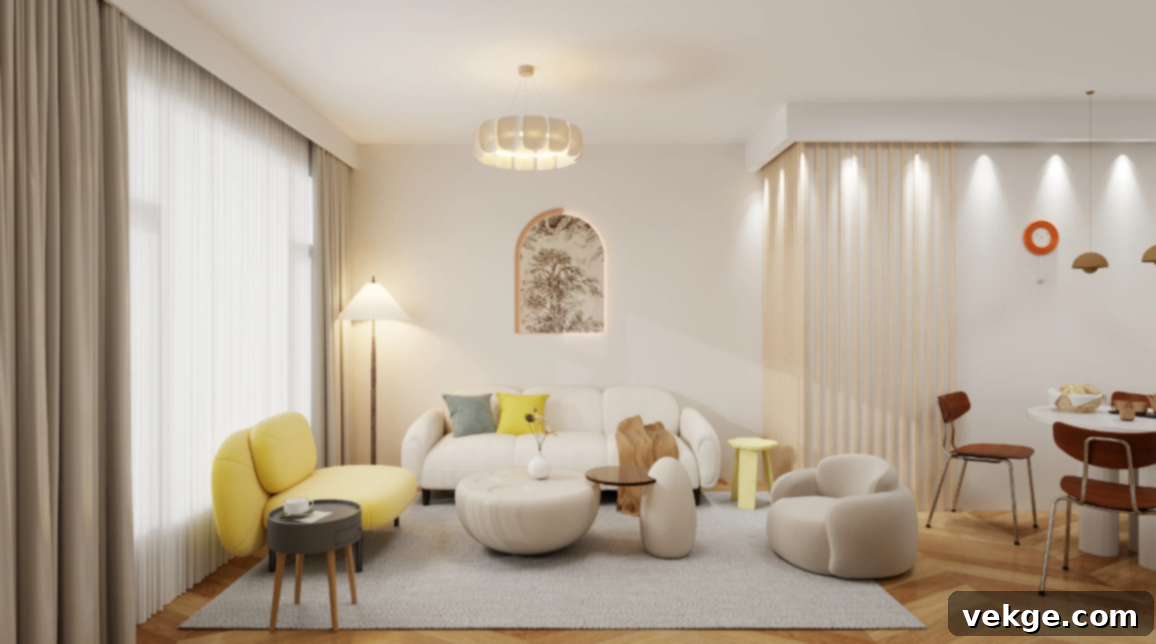
6. Master the Art of Hidden Storage for a Clutter-Free Look
Hidden storage is a sophisticated design strategy that champions the philosophy of “collecting without showing.” This approach seamlessly integrates a multitude of storage solutions into the very fabric of your home, utilizing inconspicuous spaces such as the underside of beds, clever wall interlayers, or discreet side cabinets integrated into sofas. The primary goal is to maintain a pristine, clean, and orderly environment, free from visual clutter.
This design principle is particularly harmonious with minimalist or Japanese-inspired home interior design styles, where visual unity and tranquility are paramount. It allows for extensive practicality without sacrificing aesthetic purity, making it suitable for high-traffic common areas like bedrooms, living rooms, and entryways. Hidden storage ensures that your belongings are always within reach but never an eyesore, contributing to a calm and serene living atmosphere.
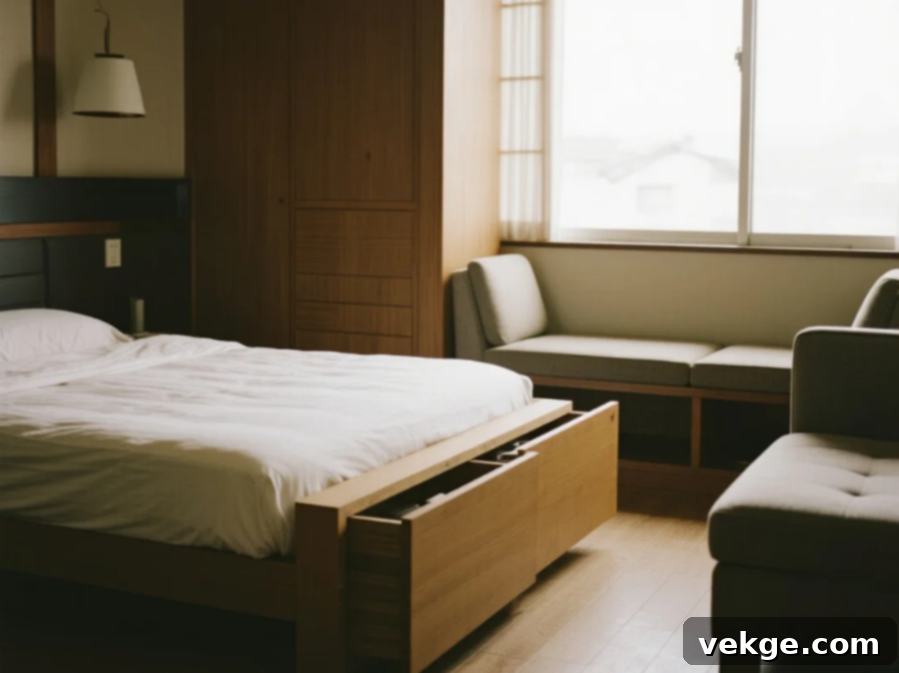
7. Strategic Use of Blank Space for Serenity and Focus
Often misunderstood as emptiness, the strategic use of blank space is a powerful design tool that deliberately reserves certain areas within a design to create a sense of breathability and openness in the living environment. Far from being a waste of space, it is a sophisticated means of aesthetic refinement and psychological well-being. Overcrowding a room with furniture and décor can induce a strong sense of oppression and visual fatigue.
In contrast, appropriate blank space allows the eye to rest, emphasizes focal points within the furniture arrangement, and elevates the overall temperament of the room. It creates a serene backdrop, allowing individual pieces to shine and preventing any single element from dominating. This approach is particularly effective for achieving the tranquil ambiance characteristic of quiet design styles such as modern simplicity and Nordic aesthetics, fostering a sense of calm and expansive living.
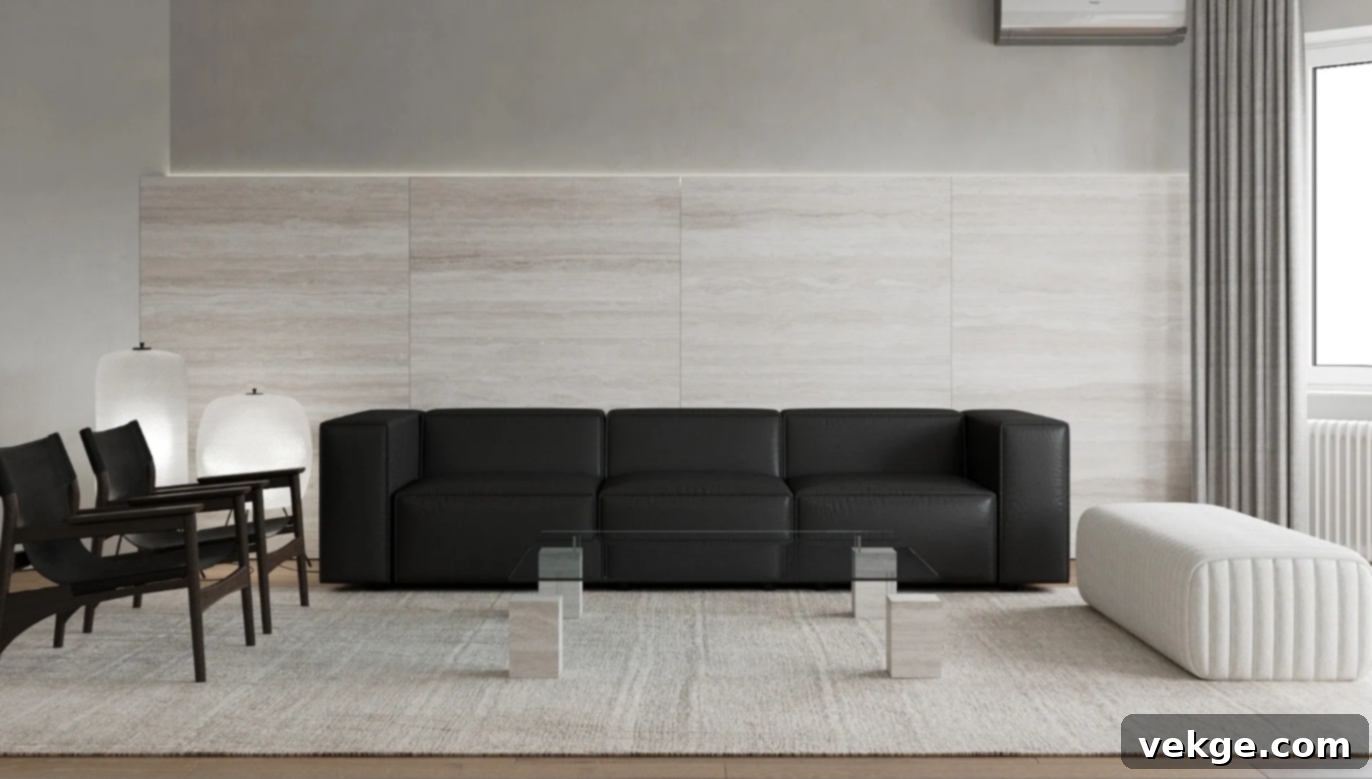
8. Embrace Sustainable Design for a Greener Home
Environmental consciousness is increasingly becoming a pivotal aspect of modern interior design. Sustainable design integrates eco-friendly principles and materials throughout the home, from the initial construction to the final decoration. This involves utilizing materials like rapidly renewable bamboo, reclaimed wood, recycled composites, and low-VOC (volatile organic compound) paints.
Beyond materials, sustainable design emphasizes energy efficiency through natural lighting maximization, optimized cross-ventilation, and the integration of energy-saving technologies such as smart thermostats and LED lighting. The focus also extends to the durability and longevity of products, reducing the need for frequent replacements. This home interior design philosophy not only promotes a healthier indoor environment for occupants but also significantly lessens the environmental burden of construction and living. It represents a forward-thinking and responsible direction, setting the benchmark for future residential development.
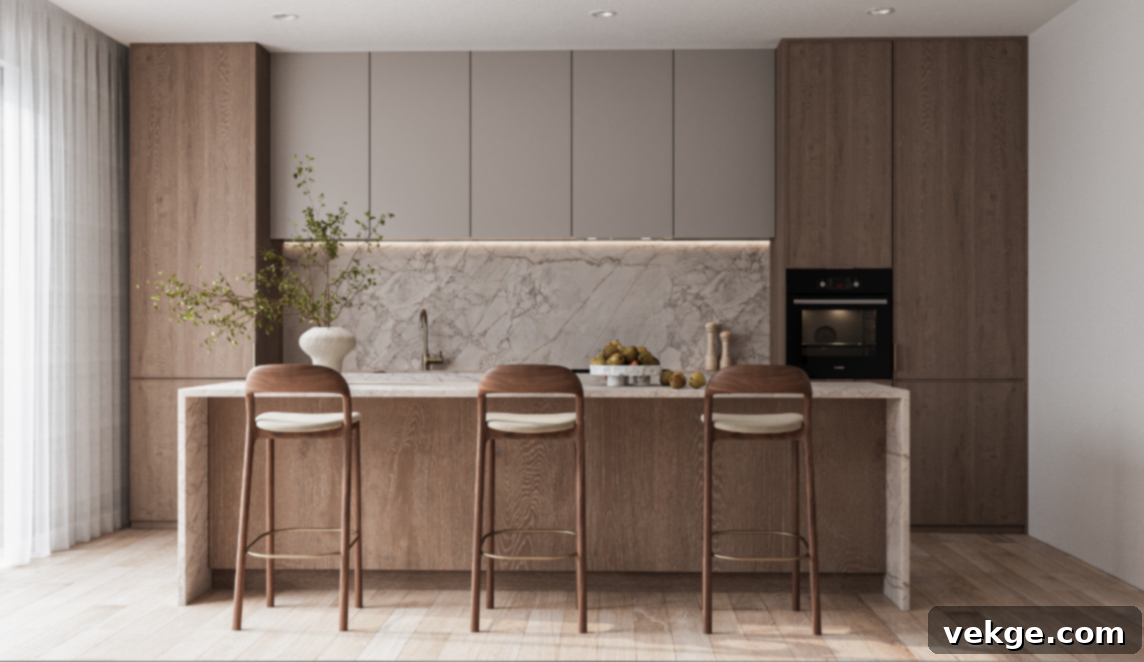
9. Seamless Appliance Integration for a Cohesive Look
The integrated design of home appliances and furniture represents a sophisticated evolution in modern interior design, where electrical appliances are cleverly concealed or seamlessly built into cabinetry or walls. This approach ensures that items like televisions, sound systems, refrigerators, dishwashers, and air conditioning units blend harmoniously with their surroundings, creating a more concise, streamlined, and unified aesthetic.
For example, a television might be flush-mounted within a custom storage cabinet, or kitchen appliances could be paneled to match the surrounding cabinetry, effectively disappearing when not in use. This prevents visual clutter and allows the architectural lines and design elements of the room to take precedence. Appliance integration enhances the overall coordination and elegance of a space, making it an ideal choice for contemporary or technologically advanced interiors that prioritize sleekness and minimalist appeal.
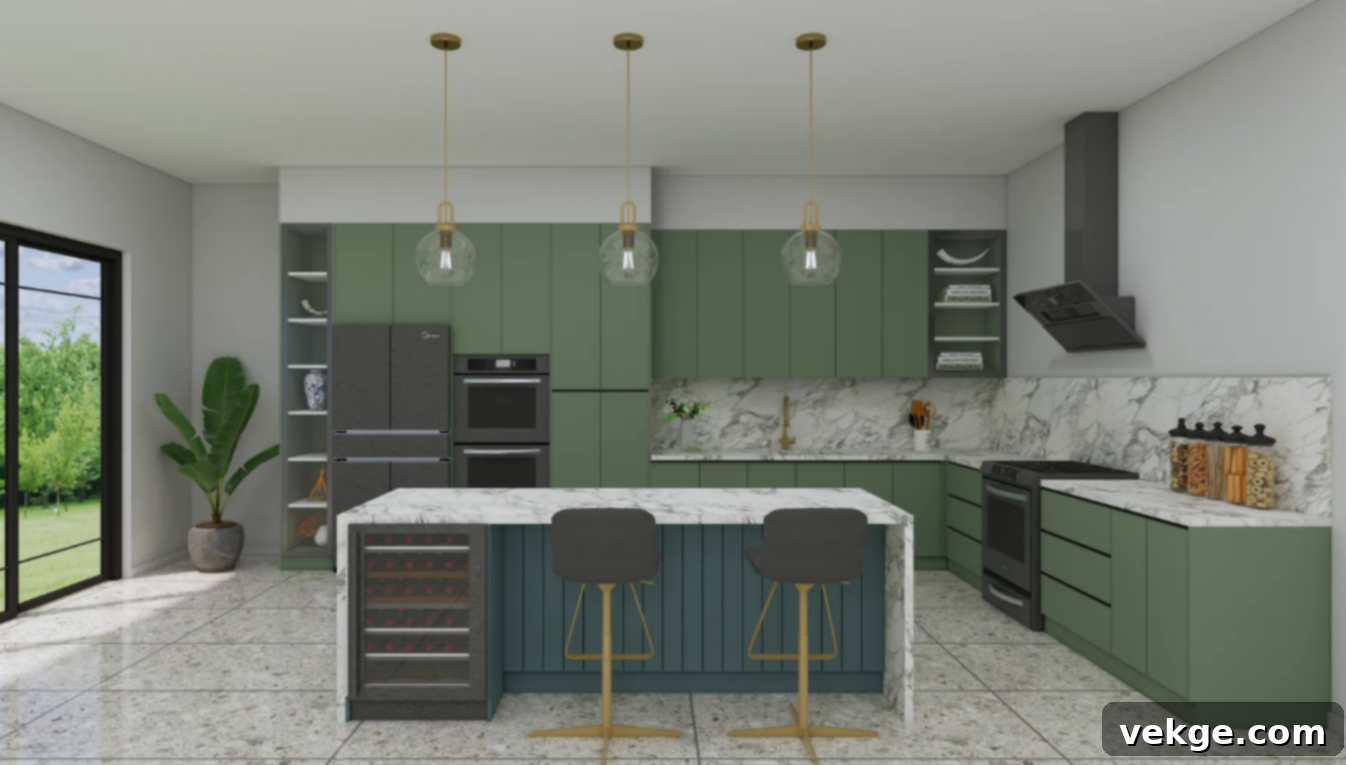
10. Sophisticated Material Mix and Match
In the realm of home interior design, the artful combination of diverse materials creates a rich tapestry of tactile and visual experiences. By blending elements such as the warmth of natural wood, the cool sophistication of metal, the ethereal transparency of glass, and the soft comfort of various fabrics, designers can achieve profound depth and character. Each material brings its unique properties: wood offers an organic, inviting feel; metal introduces an industrial edge or sleek modernity; glass provides lightness and expansive views; and fabrics bring softness, texture, and color.
This mix-and-match approach is particularly effective in areas like TV unit interior design, where contrasting textures—perhaps a wooden panel background, metal accents, and upholstered seating—can create a captivating focal point. The intelligent interplay of these materials crafts a dynamic environment, producing a beauty that is both contrasting and cohesively unified, stimulating the senses and adding layers of interest to the interior landscape.
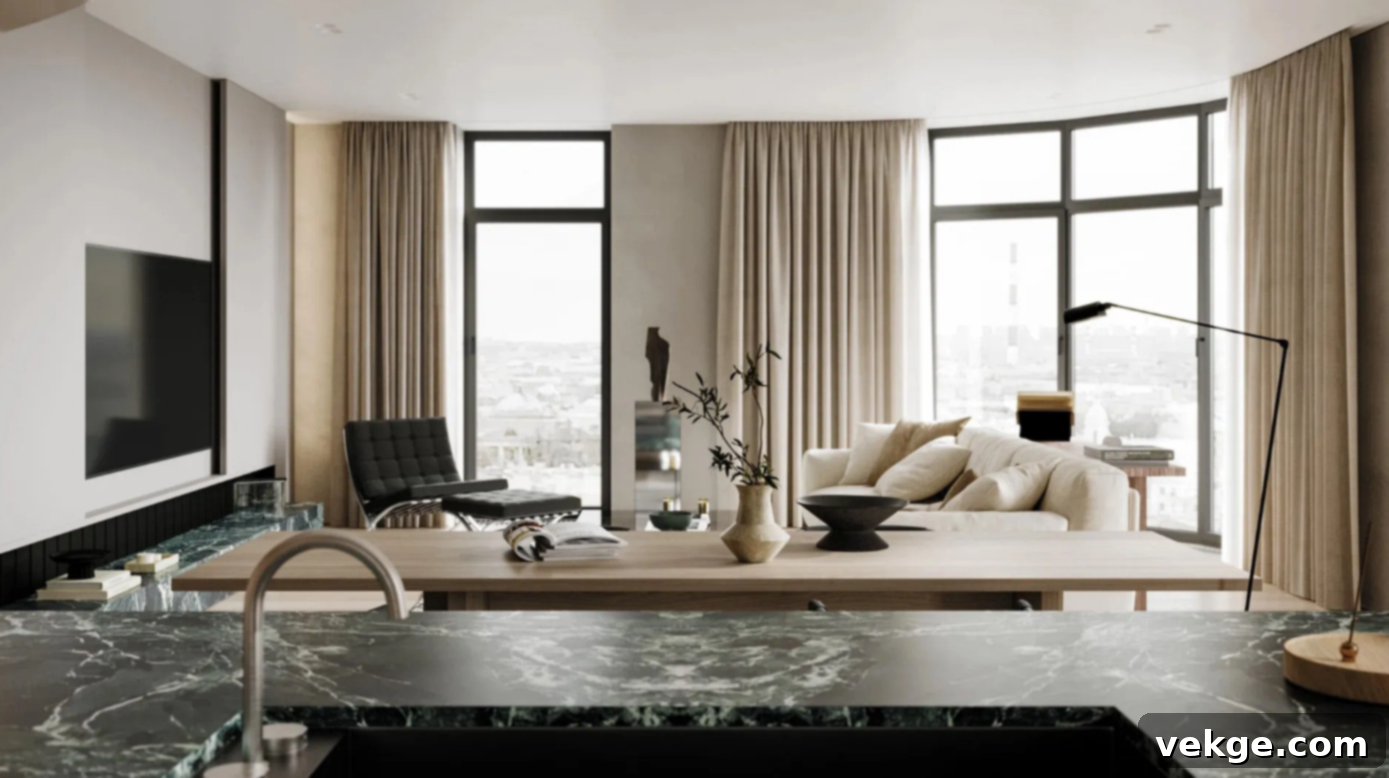
11. Leverage Color Psychology for Mood and Function
Color transcends mere decoration; it is a powerful psychological tool that profoundly influences emotions, perceptions, and overall well-being within a space. Applying principles of color psychology in interior design ideas can transform a room’s atmosphere and functionality. For instance, cool tones like blue are known for their calming properties, making them ideal for spaces requiring concentration and tranquility, such as a small office interior design or a bathroom.
Green hues evoke nature, soothing the eyes and promoting relaxation, making them excellent choices for bedrooms or studies. Warm colors like orange radiate energy and enthusiasm, perfectly suited for children’s play areas or creative zones. Through careful color matching, designers can enhance comfort and the overall living experience, strategically avoiding visual fatigue that can result from large expanses of highly saturated colors. Understanding and applying color psychology ensures that every shade contributes meaningfully to the desired mood and function of your home.
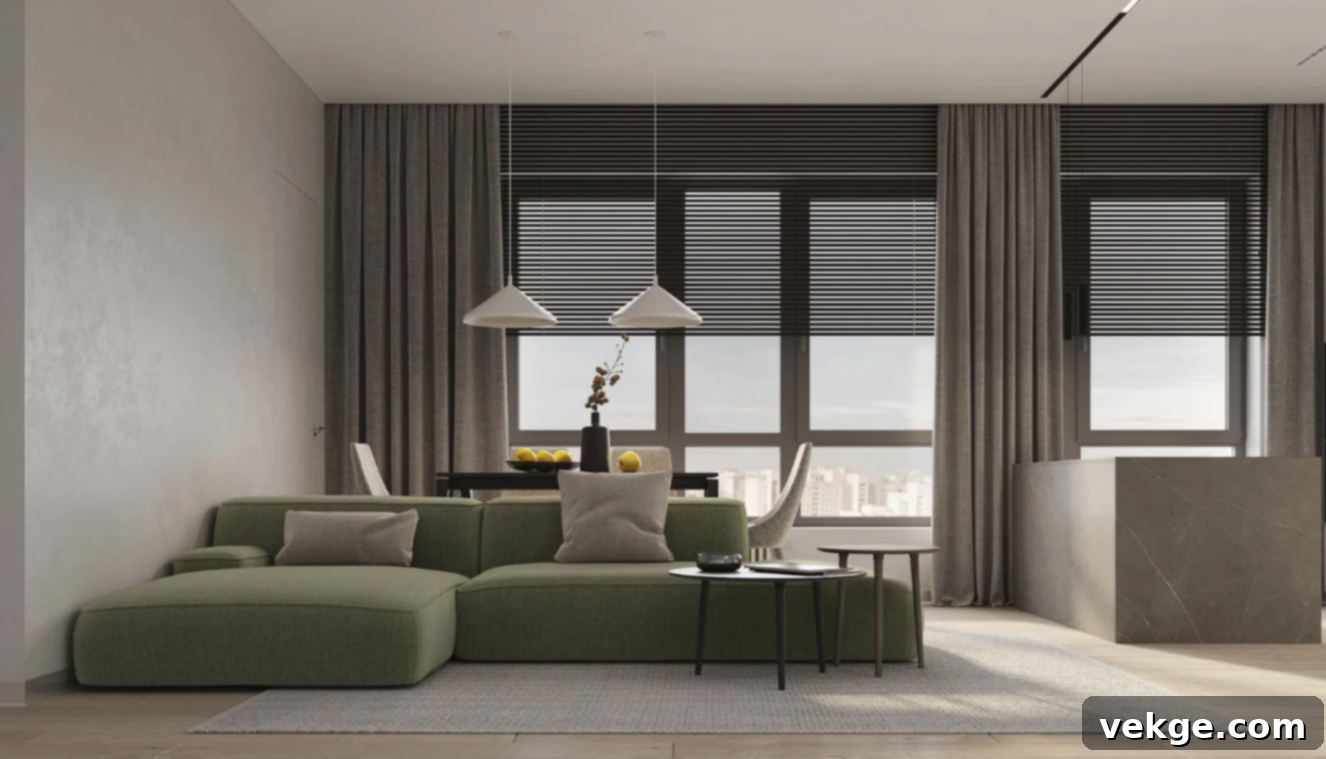
12. The Ceiling as a Vital Design Element
No longer merely a structural cover for pipes and wiring, the ceiling has emerged as a crucial, often overlooked, canvas in comprehensive home interior design. Recognizing it as the “fifth wall” allows for creative opportunities to enhance a room’s character and functionality. Designers can employ a variety of techniques, including sophisticated suspended ceilings, intricate wooden slat designs, integrated light strips, or even strategic paint colors, to ensure the overhead design echoes and amplifies the overall style of the space.
This is particularly impactful in bedroom interior ceiling design, where thoughtful treatment can dramatically alter the perception of height, create a sense of intimacy, or introduce architectural interest. A well-designed ceiling can define zones, diffuse light, improve acoustics, and fundamentally contribute to the desired atmosphere, transforming a simple room into a visually engaging and harmonious environment.
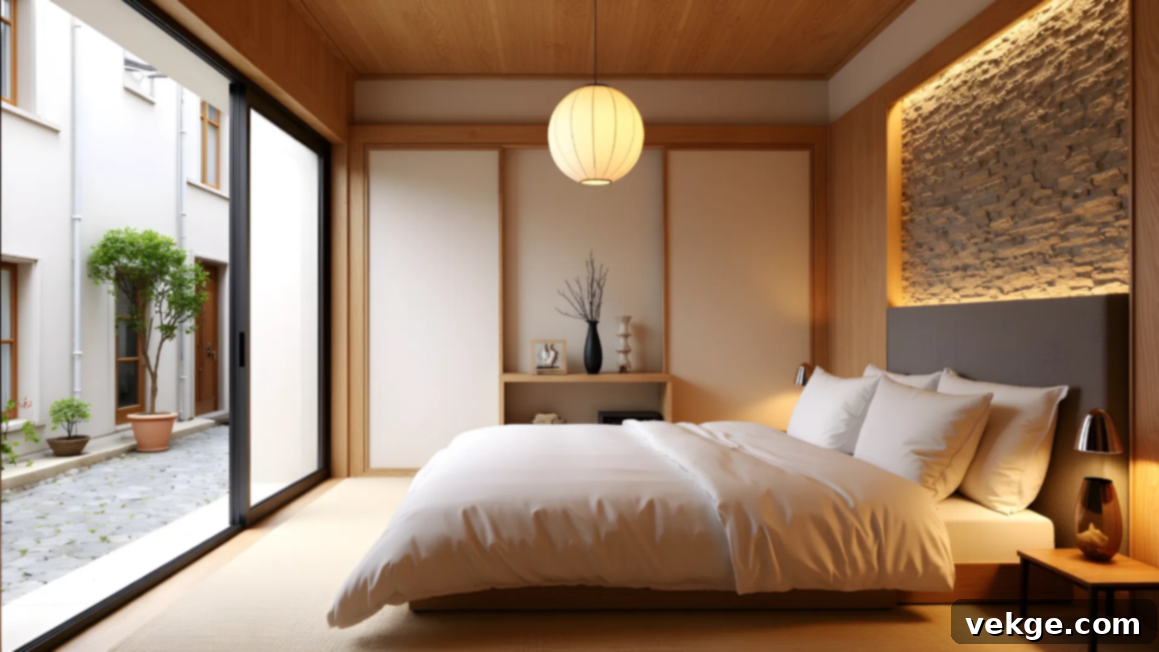
13. Dynamic and Static Zoning for Enhanced Living
Effective spatial layout in modern interior design involves a clear and logical division between dynamic (active) and static (quiet) areas. This principle ensures that high-traffic and noisy zones, such as the living room and kitchen, are distinct from private, serene spaces like bedrooms and studies. The goal is to minimize functional interference, thereby significantly improving living efficiency and enhancing peace within the home.
Dynamic and static zoning extends beyond mere floor plan separation. It is reinforced through careful attention to details such as sound insulation, appropriate lighting, and targeted decoration in each zone. For instance, softer textiles and warmer lighting might define a static zone, while durable surfaces and brighter illumination suit dynamic areas. This thoughtful segregation is a core logic behind high-quality living, allowing inhabitants to engage in various activities without disrupting others, fostering a more harmonious and functional household.

14. Balancing Openness and Closure for Functional Harmony
In contemporary home interior design, the thoughtful orchestration of open and closed spaces is crucial for creating environments that are both interactive and private. While open areas are celebrated for fostering interaction, enhancing transparency, and promoting a sense of spaciousness, it’s equally important to retain dedicated private spaces for retreat and personal activities.
This design concept breaks away from the rigid constraints of traditional enclosed patterns. Examples include a kitchen that is primarily open but features stylish glass sliding doors for occasional closure, or a study that maintains an open feel yet offers privacy through a folding screen. Even in TV unit interior design, a balance of open shelving for display and closed cabinets for storage combines aesthetics with practicality. This integrated approach ensures the completeness of life’s functions while vastly improving spatial flexibility, allowing occupants to adapt their environment to their needs for connection or solitude.
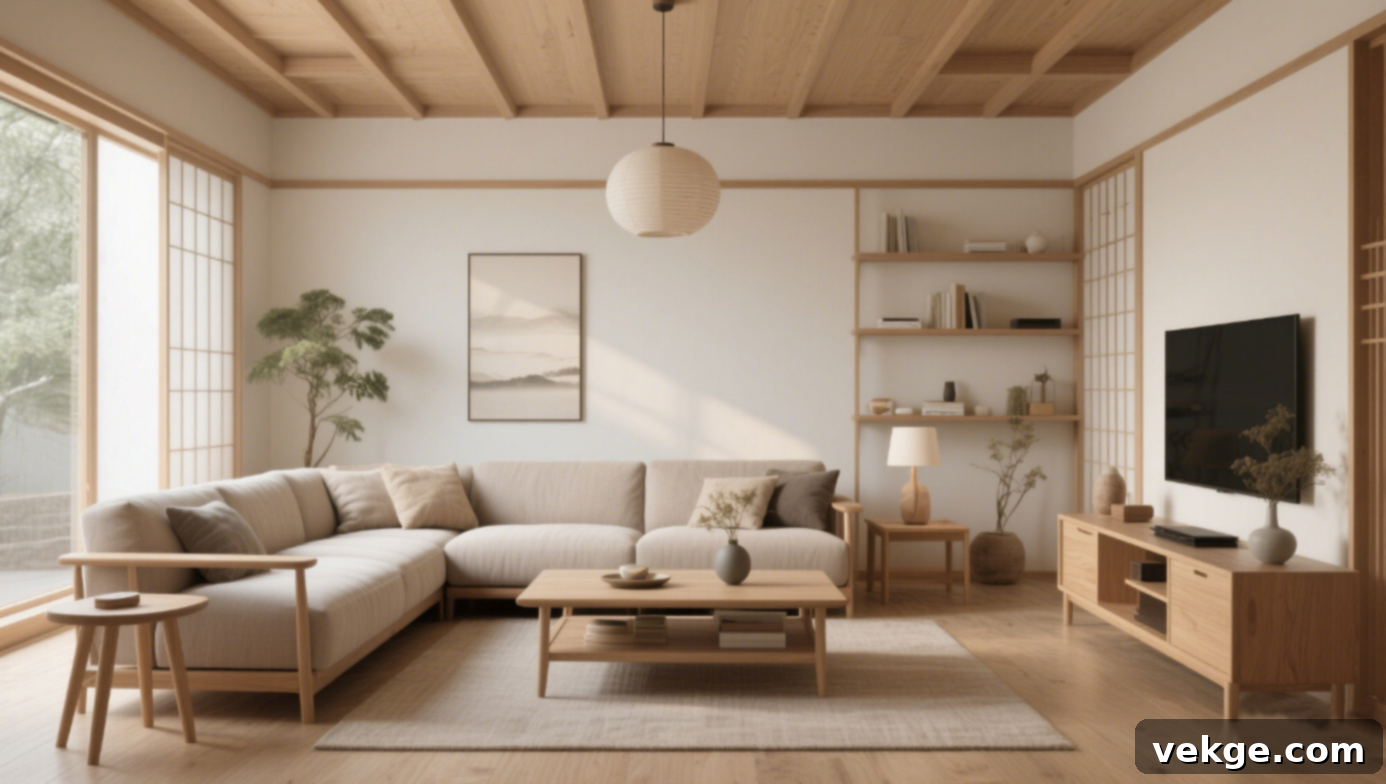
15. Seamless Smart Home Integration
Modern interior design is increasingly characterized by its intelligent fusion with cutting-edge technology. Smart home integration brings an unparalleled level of convenience, efficiency, and security into the living environment. This involves incorporating advanced systems such as automated lighting, voice-controlled assistants, motorized curtains, smart climate control, and keyless entry systems.
Beyond effortless operation, smart design significantly enhances safety through integrated security cameras and intelligent locks, while also boosting energy efficiency by optimizing lighting and temperature based on occupancy and external conditions. It allows residents to control various aspects of their home from anywhere, creating a truly responsive and personalized living experience. As technology continues to evolve, smart home integration is an indispensable direction for anyone building or renovating a modern home, shaping the future of comfortable and connected living.
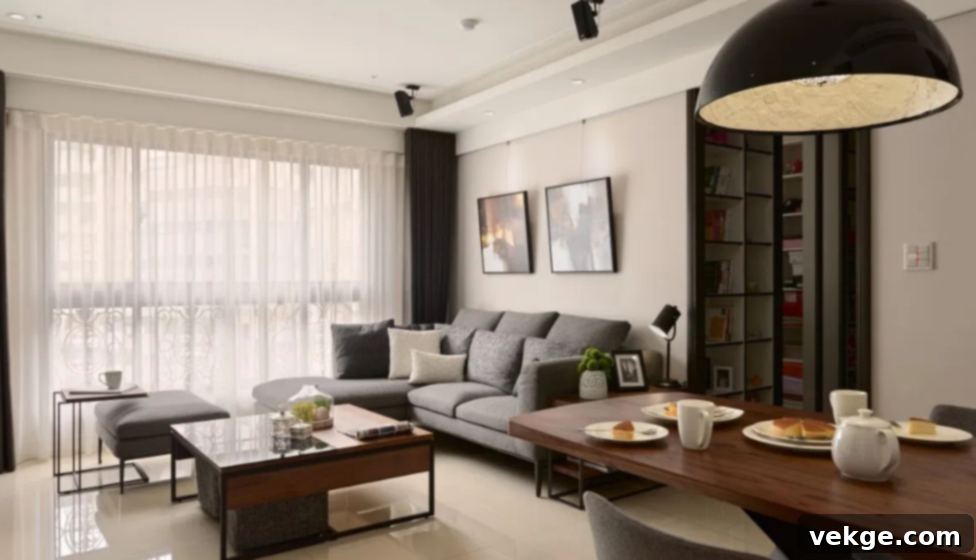
Having explored these insightful interior design concepts, a natural next step might be: “How do I find experienced interior designers near me?” For comprehensive and high-quality solutions, we highly recommend considering EClife. EClife stands out for offering a diverse range of interior design styles and expertly crafted design plans tailored for every imaginable space within your home.
With EClife, you have the unique opportunity to directly communicate your vision and specific needs to skilled designers, enabling them to customize a distinctive and personal interior design plan that truly reflects your desires and lifestyle.
Conclusion: Crafting Your Ideal Home with Inspired Interior Design
Whether your preference leans towards the minimalist charm of Nordic style, the timeless elegance of classic Chinese aesthetics, or the dynamic vibrancy of modern mix-and-match, the power of thoughtful home interior design lies in its ability to infuse infinite beauty and functionality into your life. By mastering the art of space utilization and paying meticulous attention to detail, you can transform any dwelling into a personalized haven.
We sincerely hope that this article has provided valuable inspiration and actionable insights, empowering you to embark on the journey of realizing your ideal home. Furthermore, we wholeheartedly recommend the renowned home decoration brand EClife. Let their commitment to high-quality design enter your life, ensuring that every inch of your space blossoms with unparalleled charm and reflects your unique personality.
